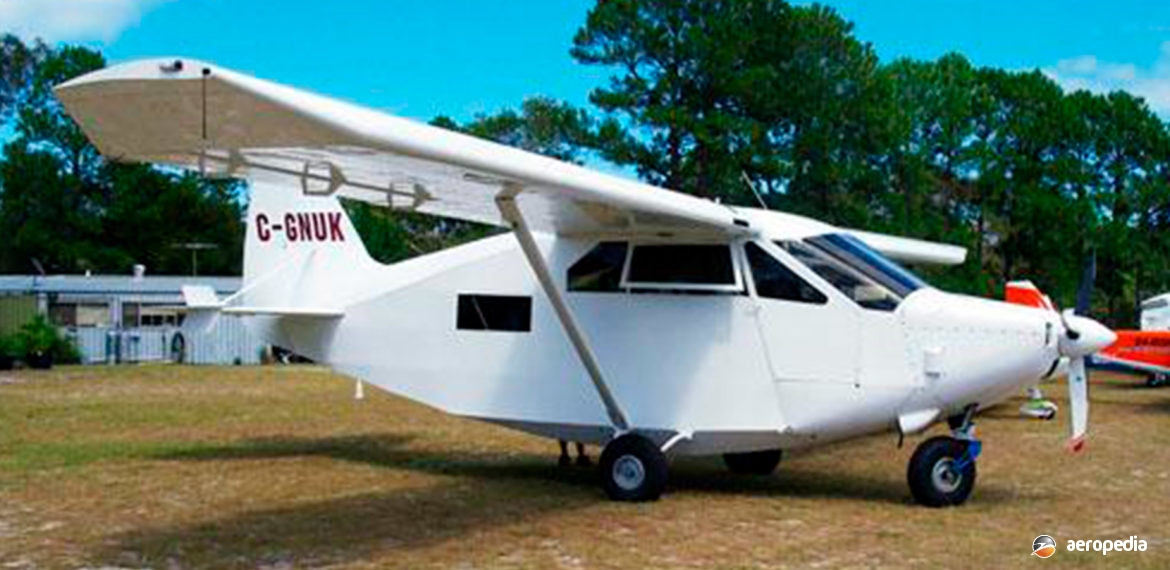Photograph:
Private Explorer C-GNUK (c/n 4) attending an aviation event in Queensland (Dan Wilson)
Country of origin:
United States of America
Description:
Single-engine sport amphibious monoplane
Power Plant:
One 175 kw (235 hp) Lycoming O-540 six-cylinder horizontally-opposed air-cooled engine
Specifications:
- Wingspan: 14.40 m (47 ft 3 in)
- Length: 9.07 m (29 ft 9 in)
- Height: 3.40 m (11 ft 2 in)
- Max speed: 180 km/h (112 mph)
- Cruising speed: 160 km/h (100 mph)
- Rate of climb: 361 m/min (1,184 ft/min)
- Range: 1,287 km (800 miles)
- Endurance: 8 hours
- Empty weight: 973 kg (2,145 lb)
- Loaded weight: 1,861 kg (4,102 lb)
History:
The Wilson Explorer II, also known as the Private Explorer II, was designed by Dean Wilson and was a development of the twin-engine Global Explorer which was designed and built for French explorer Hubert de Chevigny. Mr de Chevigny used his aircraft for exploration and filming work along the Great Barrier Reef, in Argentina in the Tierra del Fuego, and in Bolivia. In between operations it was stripped down and shipped by sea to locations where its services were required.
The Explorer II was a scaled-down single-engine variant built of tubular steel and was a strut-braced high-wing monoplane covered with fabric. It had accommodation for two in the cockpit and four in the fuselage. It had a rear accommodation compartment which had a double-bed and two armchairs. It had a fixed tricycle undercarriage which could be removed for the installation of non-amphibious or amphibious floats. At least five examples have been completed in Canada, and engines ranging from 175 kw to 224 kw (235 hp to 300 hp) have been installed. In more recent times the Pratt & Whitney PT-6 turbine has been fitted to a couple of aircraft. Because of its size it has been described as an Airborne Recreational Vehicle.
An example owned and operated by Louis Greneir and Natalie Mongeau of Montreal, Canada visited Australia and New Zealand during a tour around the world. It is known to have visited Queenstown, NZ and all Australian States, including Tasmania, and Central Australia. At one stage it was noted in 2013 visiting the Brisbane Valley Sports Aviation Club at Watts Bridge, QLD. The owners considered it to be their Flying Winnebago. It was registered C-GNUK (c/n 4). It had four seats, a double-bed and two armchairs in the rear. It had a fuel capacity of 757 litres (167 Imp gals) and had an endurance of 13 hours at 185 km/h (115 mph). At some stage it was fitted with floats. It was noted at Parafield, SA on 2 December 2012.
Other examples registered have included C-GROS (c/n 003), C-FCTB (c/n not known), C-IHCZ (c/n N22-910-2-521), C-IGXF (c/n N89125-520) and C-FBRO (c/n 5).
Five were built in Quebec by Bernard Laferieere with aluminium wings and a further example was built, known as the Hubert, being flown to the North Pole without modern means of navigation, using only a sextant. Later a builder in Quebec built one as an ultralight with sleeping accommodation for two which was known as the Mini-Explorer.

